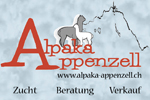Articles by Alpaca World Magazine:
Polarpacas? Well, almost?
Anne Backman
Alpacas have proven to be a hit all over the world, regardless of weather and climate conditions. The first alpacas to arrive were of old Chilean stock imported from Sweden and since then, alpacas have been imported also from Switzerland, the Netherlands, Germany and the UK, as well as directly from Chile. Currently, our national herd is almost 100% huacayas with less than half a dozen suris. Alpacas landed in Finland in 2002 and today the head count is roughly 200 but as there is no official registry, we don?t know the exact number. Finland is a big small country: with only 5.3 million inhabitants, the population density is 17 per sq. km. Therefore we cannot expect the alpaca business to reach the equivalent level of many larger nations but there is great potential, thanks to the area available and strong agricultural history. Like in a lot of industrialized and technology-oriented countries today, many Finns are seeking an alternative way of life to balance out the growing demands of business life. Certainly the media has been very helpful and shown a keen interest in alpacas: our animals have been on the national TV, radio and newspapers several times in the past 24 months? time.
Alpacas have proven to thrive in Finland, as in so many other corners of the world. They don?t seem to mind the winter conditions at all, provided that they have a wind-proof stable with indoor temperature around 0°C even during the cold periods. Even when it?s -20°C or below, they do appreciate spending a few hours outdoors and enjoy their snow baths, if possible. The pastures will only support our animals for 3-4 months of the year so we need to ensure availability of good quality feed almost year round. We actually have our own ?designer feed pellets? that are manufactured upon our specific order to complement the local hay. These pellets consist of various cereals (oats, wheat, barley) and molasses, with a heap of minerals and vitamins being added to make up for the difference to our animals? original South American diet. This feed has been manufactured locally for us since 2004 and our alpacas seem to do very well with it.
Naturally, the climate dictates some of our basic husbandry practices. Shearing is best done around May to keep the animals cool enough during the hot summer weather of but often April is still too cold. The shearing time has to be balanced also with birthings in mind so there aren?t many weeks of the spring to harvest the fibre. Matings usually take place in June-July to ensure that the cria are born in the summer. Our breeding season is quite short compared to warmer countries so we need to plan well ahead and cannot afford many ?strike-outs? with trial and error or eventual re-matings may have to be postponed to the following season. We have been trying to figure out the optimal way to deal with mating logistics, as good quality males are scarce and distances are long. Alpaca shows are still a thing of the future, although two shows have been organized in 2005 and 2006 with a couple of dozen animals participating. Fibre classes were not included, as alpaca fibre has been very underrated so far in Finland. Now we have taken on a huge challenge to promote this exquisite material and so far our message has been very well received. Our first trial lot of UK spun 100% alpaca yarn was torn from hands last year?
Last May, a group of us made a true road trip to see the 2007 BAS National Show and to pay a few farm visits on the side. It was a real eye-opener for most of the group members because in three days? time they saw more alpacas than there are in Finland totally, not to mention the short but important time we had at Farrlacey Alpaca Mill where we were demonstrated the process of yarn making. Squeezing seven alpaca-nut ladies into a van resulted, inevitably, into generating crazy ideas like us funny Finns founding an alpaca commune in the beautiful British countryside. Another idea was the overtaking of a peaceful countryside pub after watching the show on Saturday, just to force the customers to watch the Eurovision Song Contest broadcasted live from Helsinki. Initially, the football fans were not sharing our musical enthusiasm but by midnight, we had made a pubful of new friends and had a night to remember. What a trip!
As there is not much written about alpacas and their care in Finnish, some of us have actively been seeking for more information outside Finland. A group of breeders founded a new association called the Alpaca Breeders of Finland in 2006, mainly to facilitate information sourcing and distribution amongst the group, but also to work together in promoting alpacas in our country as a way of life and certainly also as means of business. We are only a handful of enthusiasts, less than 20 people, but all the more eager to learn about alpacas and share with the others. Yours truly has attended some courses in the UK, including the BAS judge training levels 1 and 2.
We have had a huge learning curve in the past two years when it comes to evaluating our animals or caring for them. Not only have we distributed information amongst our own members but we have also sought for information in other countries. In order to learn practical details like how to carry out matings and when to be alarmed for our alpaca companions? well-being, our tiny association has organized three courses so far. In April 2007, Tim Hey gave us a very good weekend training in alpaca husbandry, assessment, shearing and fleece handling. In May 2008, Liz Barlow paid us a visit teaching us more about how to care for our studs, what breeding choices to make and how to get the best out of our fleeces along the production process.
One of our challenges is the non-existing camelid knowledge of the Finnish veterinarians. We have been compelled to learn lots about the basic health care procedures, as there really are very few vets around with any kind of alpaca or llama experience. For this reason, the Alpaca Breeders of Finland is actively working together with local veterinarians and the Finnish authorities to ensure that, albeit an exotic species, our alpacas get the best care possible. To help the vets learn more about these precious animals, our association invited Dr Claire E. Whitehead to give two one-day lectures in alpaca health care in October 2007. On the first day, some 25 veterinarians attended, including several vets from the Finnish Food Safety Authority EVIRA, and the feedback afterwards was extremely positive. The following day, Dr Whitehead spoke to our group of information-thirsty member breeders and managed to do so in a very down-to-earth and understandable manner so that everyone could follow the lecture and get the most out of her message.
One very important outcome of Dr Whitehead?s training was to provide the attendants with a new contact whom they can turn to when faced with a camelid health problem. To deepen this co-operation and to help raise the local veterinarians? alpaca awareness even further, Alpaca Breeders of Finland have agreed to take part in the travel costs of two Finnish veterinarians who will be attending a course in camelid medicine, nutrition and reproduction at the Royal Veterinary College (University of London) in July 2008. It will be an excellent opportunity for these vets to get some hands-on experience and to network with experts like Dr Whitehead and Dr Jane Vaughan. We are confident that after this intensive weekend, we will have two skilled veterinarians who can help the breeders in fundamental routines like diagnosing early pregnancies with ultrasound. Up to now, this kind of service has not really been available to us so hopefully during this very breeding season we will have even better success in getting our girls pregnant and next year many more healthy cria will see the light of day.
On behalf of Alpaca Breeders of Finland
Tweet



